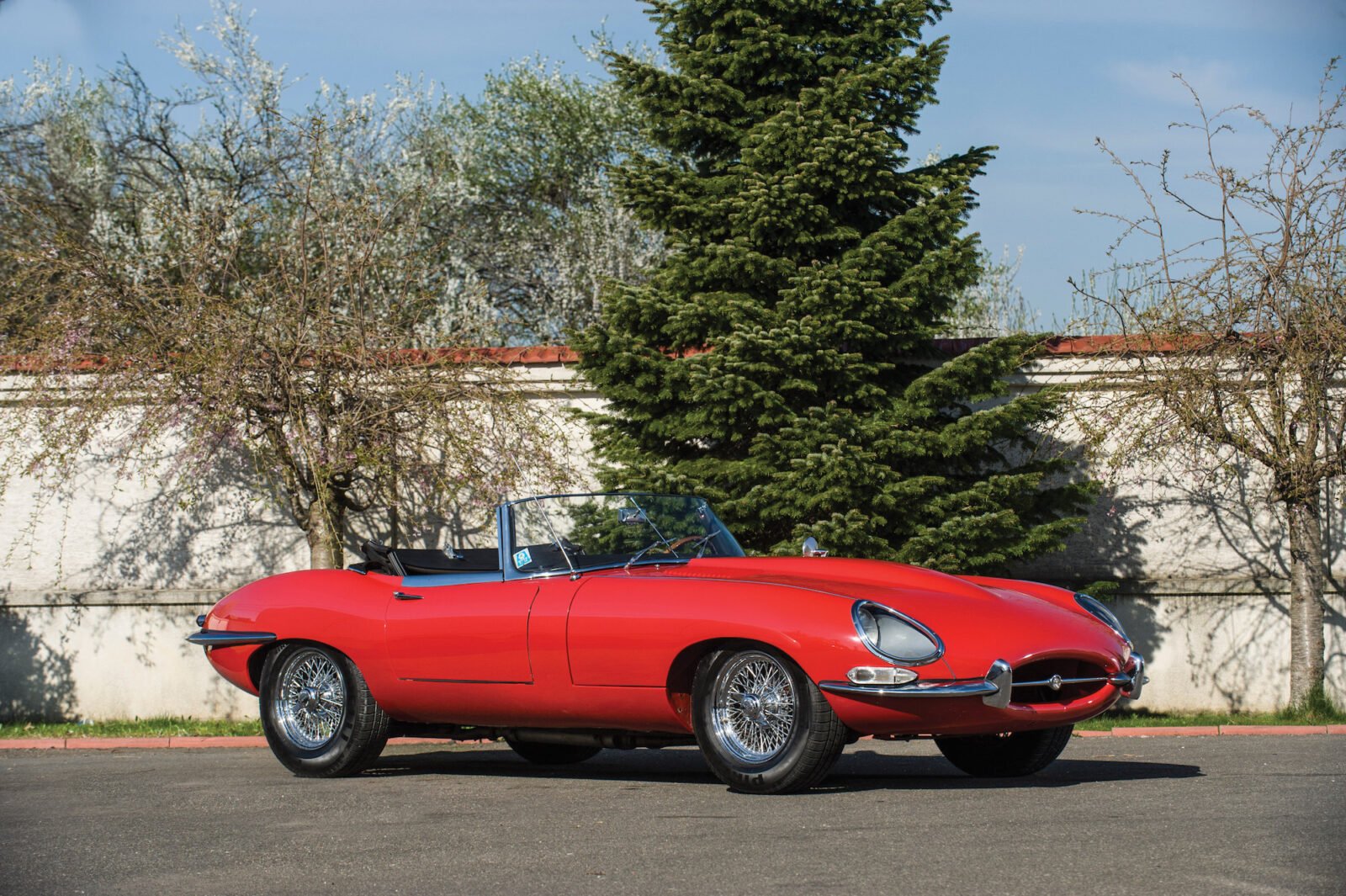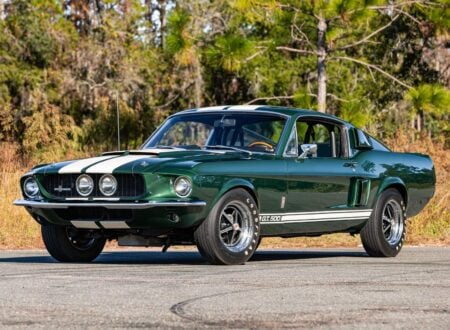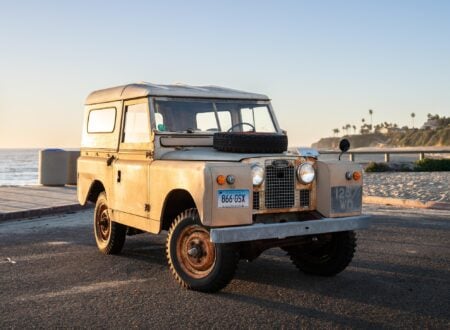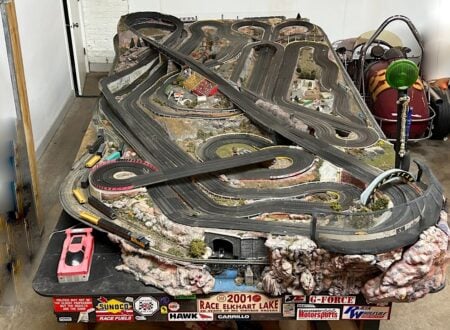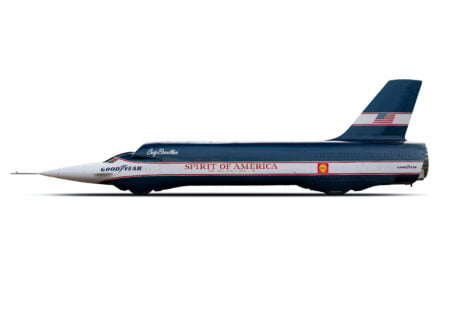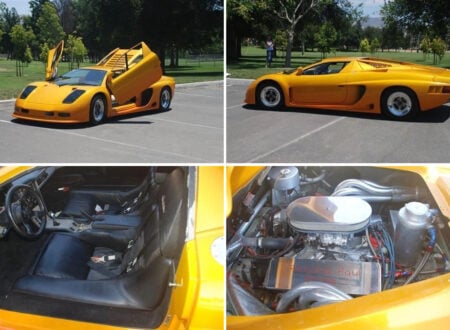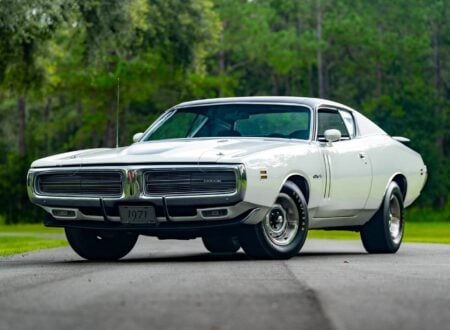The first Jaguar E-Type has since become known as the Series 1, to distinguish it from the latter Series 2 and Series 3. Of course, as is almost always the case, the purists prefer the earlier iterations of the model – so E-Types like the 1964 example you see here are always in high demand.
It’s probably fair to say that the E-Type Jaguar is widely regarded as the most beautiful car ever made, Enzo Ferrari said as much when he first saw it, and it’s a sentiment that has been reflected in innumerable “Most Beautiful Cars” lists compiled from the ’60s to the present day.
Much of the credit for the design rests on the shoulders of Malcolm Sayer, a former aircraft designer who had worked at the Bristol Aeroplane Company during WWII. Sayer was hired by Jaguar in 1951 – and it would go on to be one of the single most important hires in the history of the company. He would work for Jaguar for 20 years and pioneer both designs and methodologies that would become fundamental tenants of the automobile design process for decades to come – including the use of slide rules and 7-figure log tables to work out formulae he had personally invented for creating curves – a task now undertaken by exceedingly complex CAD software.
With the E-Type, Sayer wanted to bring Jaguar forward in one giant leap. It was longer, sleeker and more aerodynamic than any previous design which led to it having an independently verified top speed of 153+mph – a genuinely obscene speed for the early 1960s.
The first E-Types were powered by the tried and tested Jaguar XK6 engine, with three Weber carburettors, a 3.8 litre capacity and 265bhp. Power was fed to the rear wheels via a four-speed manual transmission (the three-speed automatic didn’t appear till 1966), suspension was independent all round, and Jaguar took the unusual step of installing disc brakes on all four corners (though the rear brakes were inboard).
When it was introduced in 1961 the E-Type created a global sensation. It was far cheaper than comparable cars from Ferrari, Mercedes-Benz and Aston Martin, and many considered it more beautiful to boot. It was initially an export only model, until July 1961, and sold exceedingly well on both sides of the pond. By the time production of the model ceased in 1975 Jaguar had built over 70,000 units, and over the past 15 or so years the demand for them has gone stratospheric.
The Series 1 model you see here was fully restored in 2006 before being shipped to Europe and added to a private collection, since then it’s seen only 3000 kilometres of use, and remains in immaculate condition throughout. If you’d like to see and read more about it, or register to bid, you can click here to visit RM Sotheby’s.
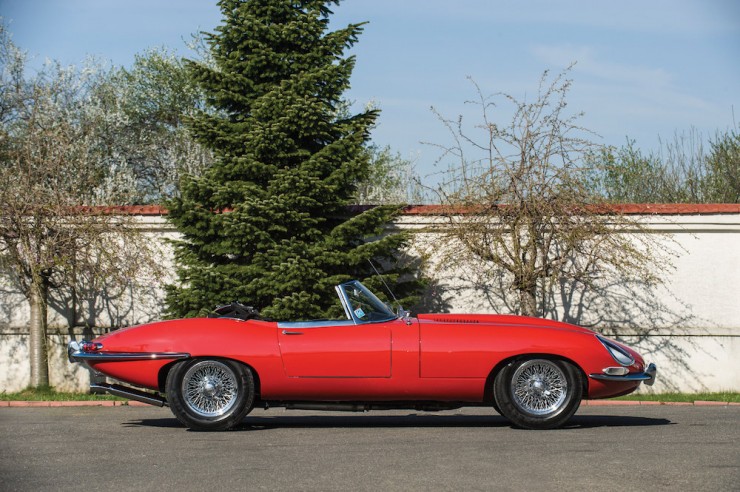
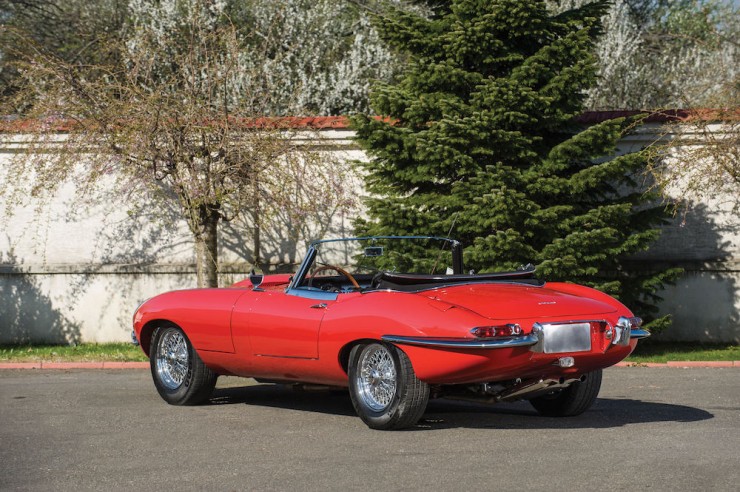
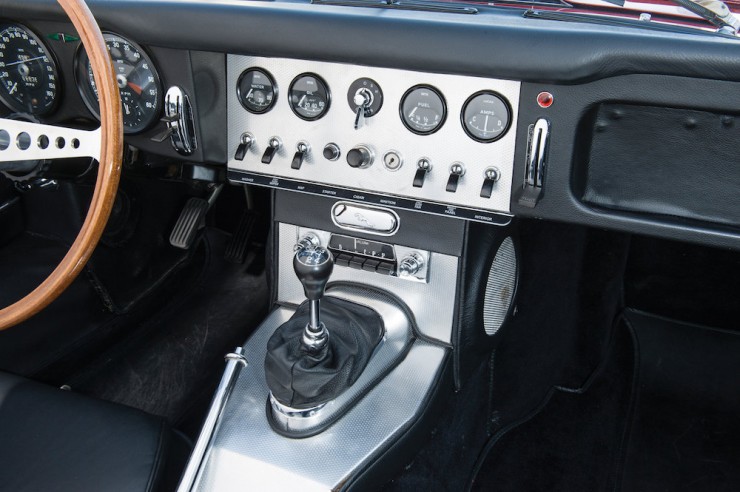
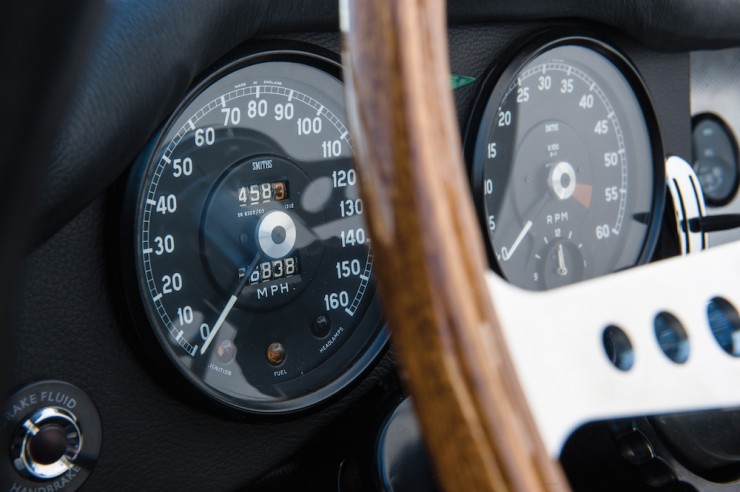
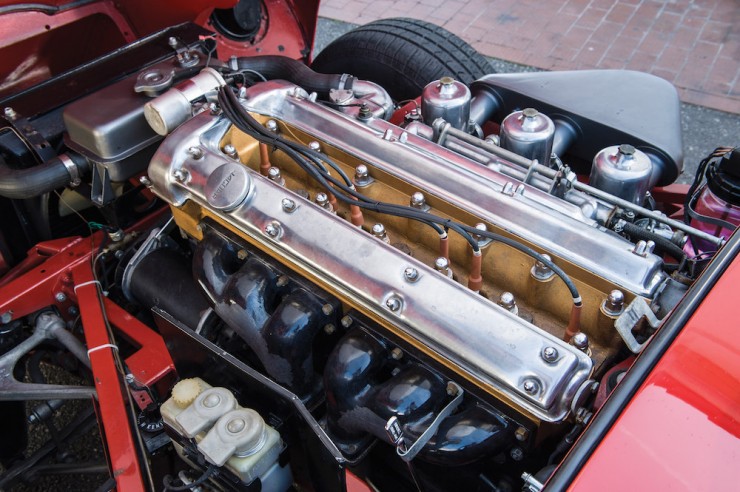
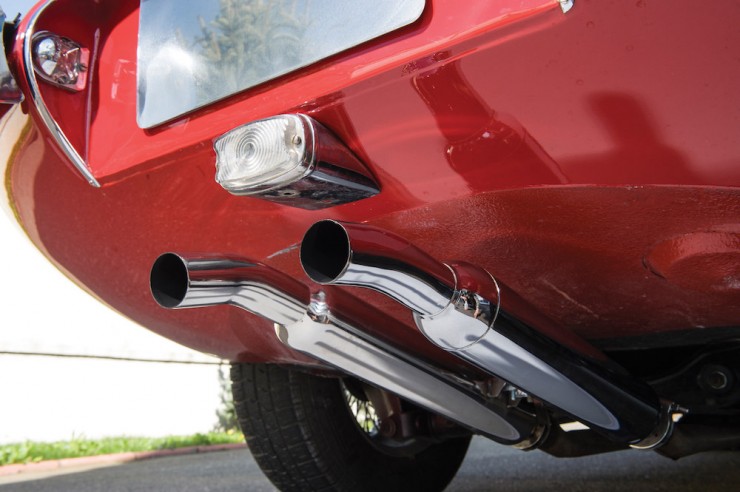
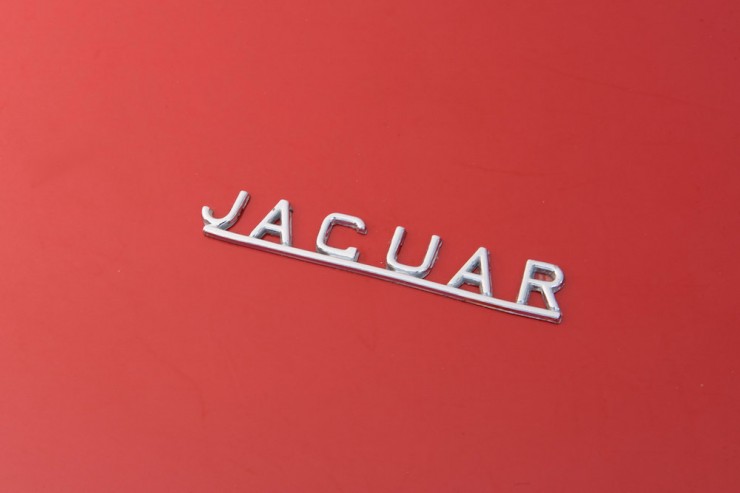
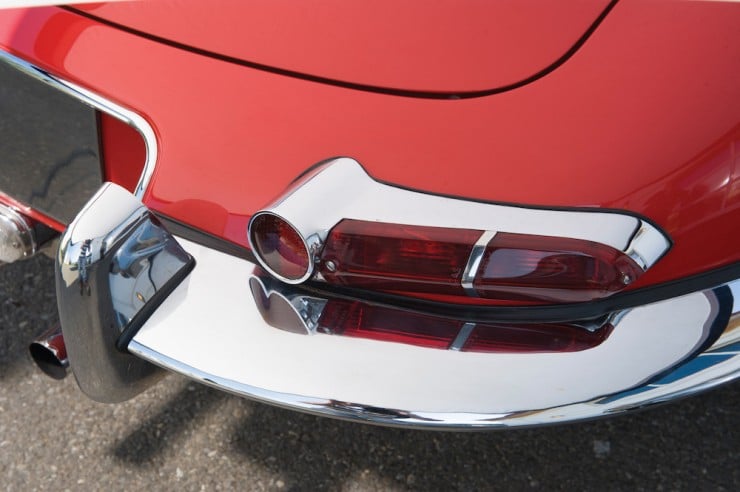

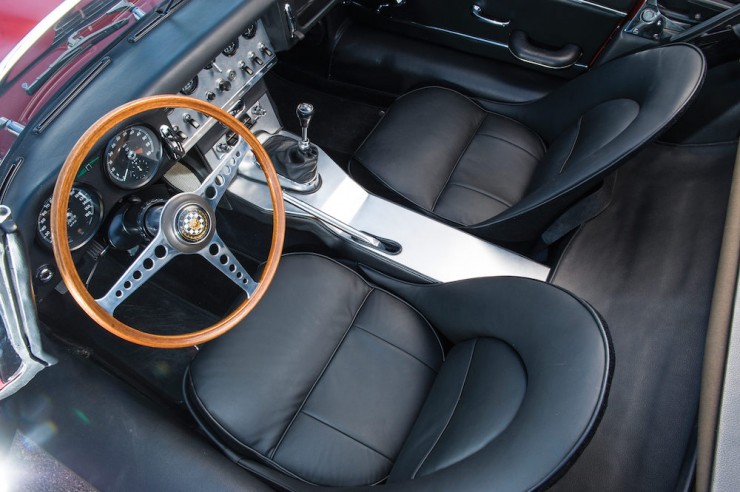
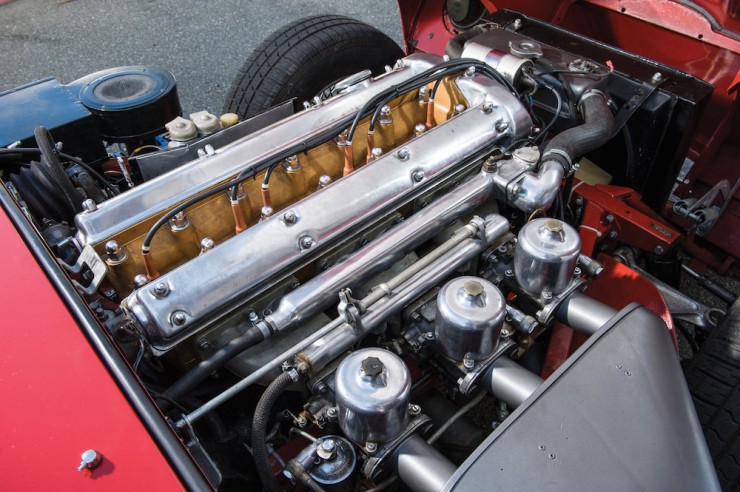
Photo Credits: Tom Wood © 2015 Courtesy of RM Sothebys

